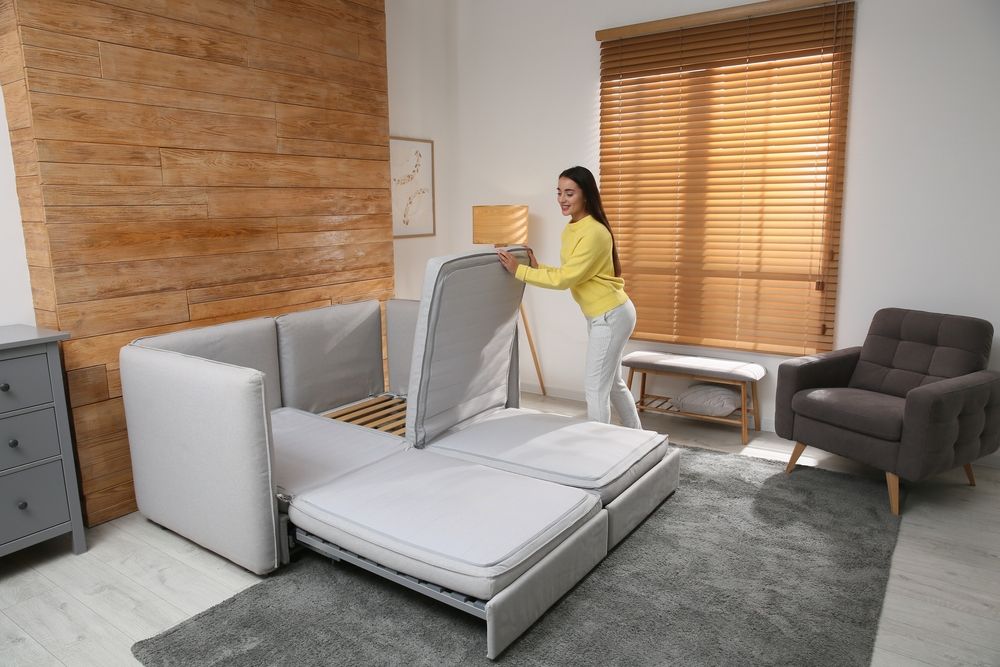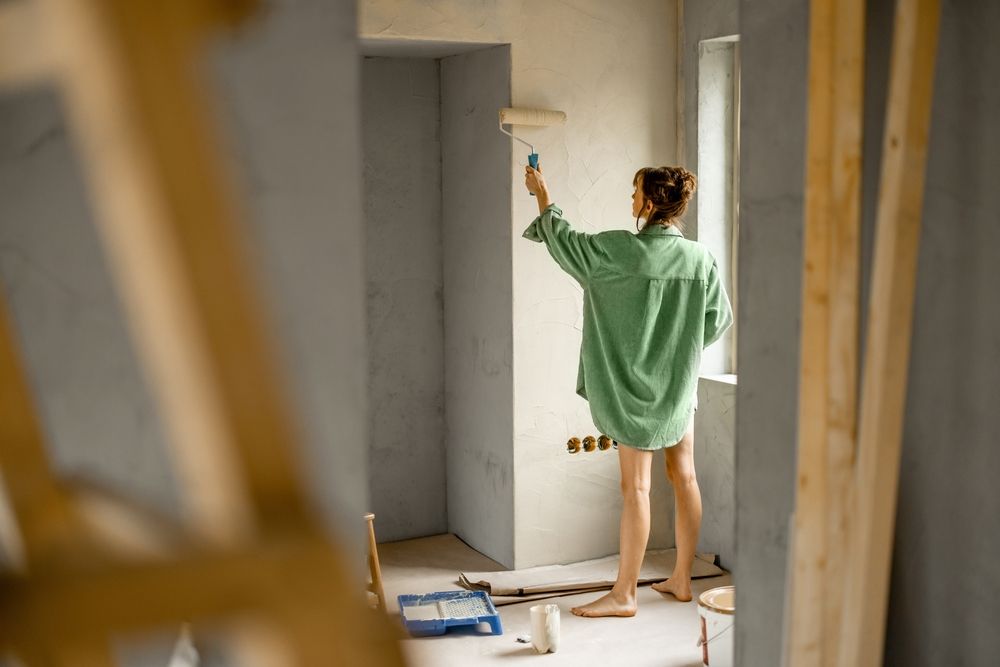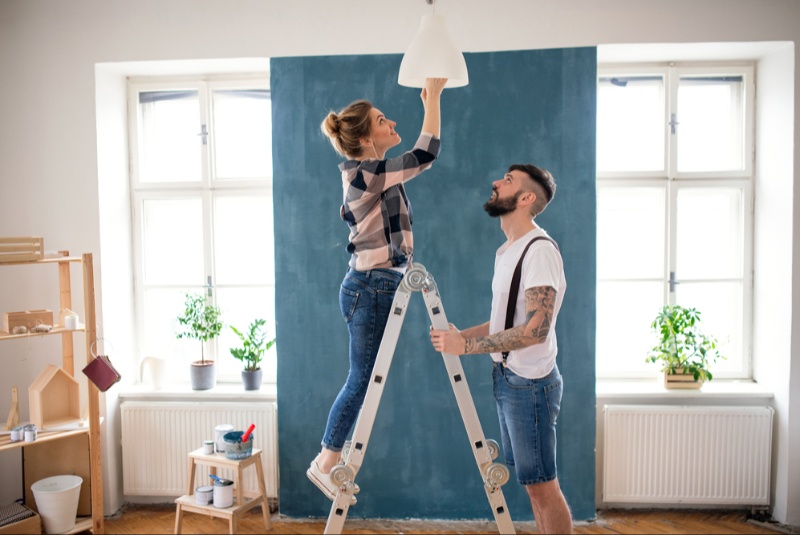Living in a small space can feel limiting at times, but with a little creativity and strategic planning, you can make even the tiniest areas functional, stylish, and comfortable. The key to maximizing small spaces is to think smart about how you use every inch of available space. Whether you live in an apartment, a studio, or just want to optimize a small room, these tips will help you make the most of your limited space without sacrificing style or comfort.
1. Use Multi-Functional Furniture
When space is tight, every piece of furniture needs to work hard. Multi-functional furniture is the perfect solution for making a small space feel more open while serving multiple purposes.
- Tip: Look for furniture that can be easily transformed or serve more than one function. Examples include fold-out desks, sofa beds, or ottomans with hidden storage.
- Examples: A coffee table that doubles as a desk or a sofa with built-in storage can help you save space and keep your home organized.
- Impact: Multi-functional furniture helps eliminate the need for excess pieces, freeing up space and reducing clutter.
2. Opt for Light Colors and Reflective Surfaces
Colors play a big role in making a space feel bigger or smaller. Lighter colors tend to open up a space, while darker hues can make it feel more cramped. To make your space feel airy and spacious, opt for light-colored walls, furniture, and decor.
- Tip: Stick to neutral tones, such as whites, light grays, and soft pastels, to make the space feel larger. You can add pops of color through accessories like cushions, rugs, and artwork.
- Reflective Surfaces: Mirrors and glass surfaces reflect light, making a room feel brighter and more expansive. Consider adding mirrors or choosing furniture with glass or mirrored finishes to open up the space.
- Impact: Light and reflective surfaces help create an illusion of space, making a small room feel larger and more inviting.
3. Make Use of Vertical Space
In small spaces, it’s crucial to think vertically. Using the walls for storage or decor can free up valuable floor space while still maintaining a functional and stylish environment.
- Tip: Install shelves, hooks, or pegboards to store or display items vertically. Wall-mounted shelves are perfect for books, plants, and decorative objects.
- Height: Consider tall furniture pieces, such as bookshelves or cabinets, that take advantage of vertical space without overwhelming the room.
- Impact: By utilizing vertical space, you can maximize storage and display areas without taking up additional floor space.
4. Declutter and Minimize
One of the easiest ways to make a small space feel bigger is to eliminate excess clutter. When there’s too much stuff in a room, it can feel cramped and overwhelming. A clutter-free space, on the other hand, will feel more organized and comfortable.
- Tip: Regularly go through your belongings and get rid of things you no longer need or use. Opt for minimalist decor and limit the number of accessories and knick-knacks.
- Storage Solutions: Invest in smart storage solutions like under-bed storage bins, closet organizers, and stackable storage baskets to keep things out of sight.
- Impact: Decluttering creates more breathing room and allows you to focus on the things that matter most, making the space feel more open and organized.
5. Incorporate Furniture That Folds Away
Folding furniture is a great space-saving option for small homes. Furniture that can be folded up when not in use offers versatility without taking up precious floor space.
- Tip: Consider folding chairs, tables, or wall-mounted desks that can be tucked away after use. A foldable dining table or wall-mounted fold-out desk can be great for small apartments or shared spaces.
- Impact: Folding furniture allows you to maximize the functionality of your space while keeping it flexible and adaptable for different needs.

6. Use Transparent or Open-Frame Furniture
Furniture with open frames or made from clear materials can make a room feel less crowded and more open. For example, acrylic chairs, glass coffee tables, and metal shelving units take up less visual space while still providing the necessary function.
- Tip: Choose furniture pieces that are airy or see-through to maintain a sense of openness in the room. Transparent furniture can visually create more space while still serving a purpose.
- Impact: Using furniture with transparent or open designs helps maintain a light and airy feel, especially in rooms with limited space.
7. Create Zones in Open-Plan Spaces
If you’re working with an open-plan space, it’s important to create defined zones for different activities. This will help make the space feel more organized and allow you to maximize its function.
- Tip: Use furniture, rugs, or dividers to separate areas for eating, lounging, or working. For instance, a sofa can create a boundary between the living and dining areas, or a bookshelf can be used as a partition.
- Impact: Creating distinct zones helps break up the space and makes it feel more purposeful and less chaotic.
8. Go Vertical with Plants
Plants not only add beauty to a space, but they can also be a great way to utilize vertical space. Hanging plants or plants placed on tall shelves can add greenery to your space without taking up valuable floor space.
- Tip: Use wall-mounted planters, hanging baskets, or vertical garden systems to add life and freshness to your home.
- Impact: Vertical plants not only save space but also bring a natural, calming element to your home, enhancing both the aesthetics and air quality.
9. Use Sliding Doors Instead of Hinged Doors
Hinged doors take up extra space when they swing open. To maximize the space in your home, consider replacing traditional doors with sliding or pocket doors. These types of doors don’t require clearance space to open and close, making them ideal for tight areas.
- Tip: Sliding doors are perfect for bedrooms, bathrooms, and closets, where space can be limited. They allow you to use the entire room without the obstruction of a swinging door.
- Impact: Sliding doors free up floor space, making your home feel more spacious and allowing for greater functionality in smaller rooms.
10. Make the Most of Your Entryway
The entryway is often the most underutilized area in a home, yet it’s essential for organizing and managing your belongings. A well-organized entryway can provide storage for shoes, coats, and bags while making the rest of your home feel more organized.
- Tip: Install hooks, shelves, or a small bench to help organize shoes, coats, and accessories. A narrow console table can also be a great addition for keys, mail, or decorative items.
- Impact: A tidy and well-organized entryway sets the tone for the rest of your home and makes it easier to stay organized on a daily basis.
Maximizing small spaces in your home doesn’t require major renovations or costly changes. By being intentional with furniture choices, decluttering regularly, and using creative storage solutions, you can make the most of every inch of your space. From utilizing vertical space to choosing multi-functional pieces, these strategies will help you create a comfortable, stylish, and functional environment that feels more spacious and organized. With a little planning and effort, even the smallest spaces can be transformed into cozy, efficient living areas.




